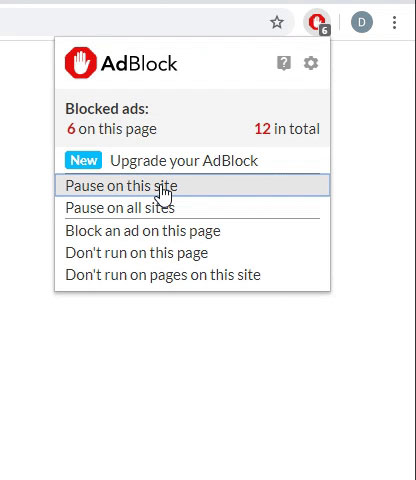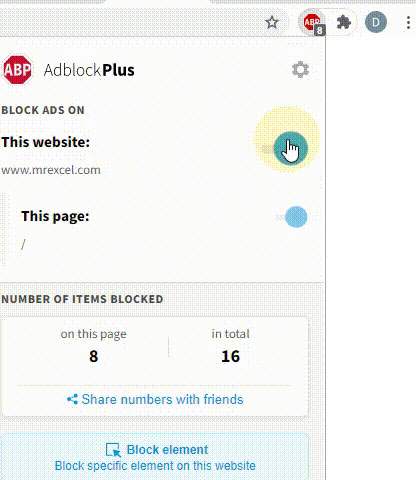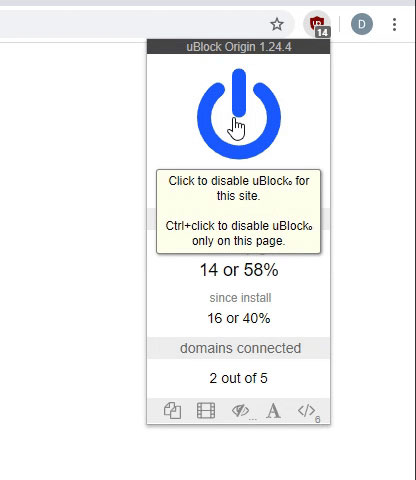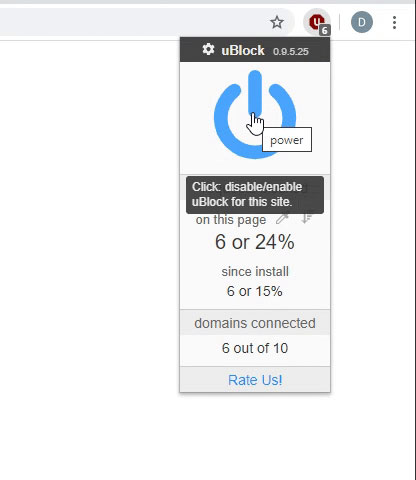Dear Friends,
I am using the below vba code which works absolutely fine but the only problem is it slows down after every run
when I open excel and run it for the first time it takes 100 milliseconds and then second time it takes 150 milliseconds and then third time it gets more slow
the problem is with the deletion part of the code - because I have tested my code removing the deletion part and the the code works absolutely fine
but as soon as the deletion part is inserted in the code it slows down with every run. It seems like it is storing something in the memory which is causing it to slow down. When I quit excel and start again then it runs ok but again slows down with every run
What exactly I don't know. Does anybody have an idea what is wrong or have experienced the same issue
the problem part
FULL CODE
I am using the below vba code which works absolutely fine but the only problem is it slows down after every run
when I open excel and run it for the first time it takes 100 milliseconds and then second time it takes 150 milliseconds and then third time it gets more slow
the problem is with the deletion part of the code - because I have tested my code removing the deletion part and the the code works absolutely fine
but as soon as the deletion part is inserted in the code it slows down with every run. It seems like it is storing something in the memory which is causing it to slow down. When I quit excel and start again then it runs ok but again slows down with every run
What exactly I don't know. Does anybody have an idea what is wrong or have experienced the same issue
the problem part
VBA Code:
Dim delRange As Range, cell As Range
' Loop through column L in reverse (faster deletion)
For Each cell In wsDest.Range("L9:L" & lastRow)
If cell.Value = 0 Then
If delRange Is Nothing Then
Set delRange = cell
Else
Set delRange = Union(delRange, cell)
End If
End If
Next cell
' Delete all rows in one go (if there are rows to delete)
If Not delRange Is Nothing Then delRange.EntireRow.DeleteFULL CODE
VBA Code:
Sub GenerateUniqueListsOne()
ActiveSheet.Unprotect Password:="merchant"
Dim startTime As Double
Dim endTime As Double
' Start Timer
startTime = Timer * 1000
Application.ScreenUpdating = False
Application.Calculation = xlCalculationManual
Dim wsSrc As Worksheet, wsDest As Worksheet
Dim dictQuality As Object, dictSupplier As Object, dictArticle As Object
Dim arrQuality, arrSupplier, arrArticle, arrSampling
Dim i As Long, lastRow As Long, outputRow As Long
' Set worksheets
Set wsSrc = ThisWorkbook.Sheets("DATABASE")
Set wsDest = ThisWorkbook.Sheets("Sample Wise")
lastRow = wsDest.Cells(wsDest.Rows.count, "B").End(xlUp).Row
If lastRow >= 9 Then
wsDest.Range("A9:L" & lastRow).Clear
End If
' Load named ranges into arrays
arrQuality = wsSrc.Range("orders_quality").Value
arrSupplier = wsSrc.Range("orders_supplier").Value
arrArticle = wsSrc.Range("orders_article").Value
arrSampling = wsSrc.Range("orders_sampling").Value
' Initialize dictionaries
Set dictQuality = CreateObject("Scripting.Dictionary")
Set dictSupplier = CreateObject("Scripting.Dictionary")
Set dictArticle = CreateObject("Scripting.Dictionary")
' Populate dictionaries with unique values where orders_sampling is not empty
For i = 1 To UBound(arrQuality, 1)
If Trim(arrSampling(i, 1)) <> "" Then
If Not dictQuality.Exists(arrQuality(i, 1)) Then dictQuality(arrQuality(i, 1)) = True
If Not dictSupplier.Exists(arrSupplier(i, 1)) Then dictSupplier(arrSupplier(i, 1)) = True
If Not dictArticle.Exists(arrArticle(i, 1)) Then dictArticle(arrArticle(i, 1)) = True
End If
Next i
' Convert dictionaries to sorted arrays
Dim arrSortedQuality, arrSortedSupplier, arrSortedArticle
arrSortedQuality = SortArray(dictQuality.Keys)
arrSortedSupplier = SortArray(dictSupplier.Keys)
arrSortedArticle = SortArray(dictArticle.Keys)
' Write data to Sheet1 starting from B9
outputRow = 9
wsDest.Range("B" & outputRow).Resize(UBound(arrSortedQuality) + 1, 1).Value = Application.Transpose(arrSortedQuality)
outputRow = outputRow + UBound(arrSortedQuality) + 1
wsDest.Range("B" & outputRow).Resize(UBound(arrSortedSupplier) + 1, 1).Value = Application.Transpose(arrSortedSupplier)
outputRow = outputRow + UBound(arrSortedSupplier) + 1
wsDest.Range("B" & outputRow).Resize(UBound(arrSortedArticle) + 1, 1).Value = Application.Transpose(arrSortedArticle)
' Define starting row for labels (same as where data starts)
Dim labelRow As Long
labelRow = 9
' Add labels in column A next to each list
wsDest.Range("A" & labelRow & ":A" & (labelRow + UBound(arrSortedQuality))).Value = "Quality"
labelRow = labelRow + UBound(arrSortedQuality) + 1
wsDest.Range("A" & labelRow & ":A" & (labelRow + UBound(arrSortedSupplier))).Value = "Supplier"
labelRow = labelRow + UBound(arrSortedSupplier) + 1
wsDest.Range("A" & labelRow & ":A" & (labelRow + UBound(arrSortedArticle))).Value = "Article"
' Cleanup
Set dictQuality = Nothing
Set dictSupplier = Nothing
Set dictArticle = Nothing
' Recalculate lastRow after inserting data
lastRow = wsDest.Cells(wsDest.Rows.count, "B").End(xlUp).Row
Dim formulaRng As Range
Set formulaRng = wsDest.Range("C9:J" & lastRow) ' Define the range to apply the first formula
' Apply the first formula
formulaRng.Formula = "=SUMIFS(IF(C$8=""QUANTITY"",orders_quantity,orders_value),orders_sampling,IF(ISBLANK(C$3),""*""&B$3&""*"",""*""&C$3&""*""),IF($A9=""Quality"",orders_quality,IF($A9=""Article"",orders_article,orders_supplier)),$B9,orders_supplier,IF($G$1=""ALL"",""*"",$G$1))/IF(C$8=""Quantity"",1,1000000)"
' Convert first formula to values
formulaRng.Value = formulaRng.Value
' Apply the second formula in K9:L(lastRow)
Dim sumifRng As Range
Set sumifRng = wsDest.Range("K9:L" & lastRow)
sumifRng.Formula = "=SUMIF($C$8:$J$8,K$8,$C9:$J9)"
' Convert second formula to values
sumifRng.Value = sumifRng.Value
Application.Calculation = xlCalculationAutomatic
Dim delRange As Range, cell As Range
' Loop through column L in reverse (faster deletion)
For Each cell In wsDest.Range("L9:L" & lastRow)
If cell.Value = 0 Then
If delRange Is Nothing Then
Set delRange = cell
Else
Set delRange = Union(delRange, cell)
End If
End If
Next cell
' Delete all rows in one go (if there are rows to delete)
If Not delRange Is Nothing Then delRange.EntireRow.Delete
' Apply number formatting
Dim formatRange As Range
' Define last row again after all processing
lastRow = wsDest.Cells(wsDest.Rows.count, "B").End(xlUp).Row
If lastRow >= 9 Then
' Apply format to numeric columns
Set formatRange = wsDest.Range("C9:C" & lastRow & ",E9:E" & lastRow & ",G9:G" & lastRow & ",I9:I" & lastRow & ",K9:K" & lastRow)
formatRange.NumberFormat = "#,##0 ;[<0]-#,##0 ;""-"""
' Apply format to currency columns (display as "$ 0.00 M")
Set formatRange = wsDest.Range("D9:D" & lastRow & ",F9:F" & lastRow & ",H9:H" & lastRow & ",J9:J" & lastRow & ",L9:L" & lastRow)
formatRange.NumberFormat = """$"" 0.00\ ""M"" ;""-$""0.00\ ""M"" ;-"
End If
' Apply center alignment to C9:L(lastRow)
wsDest.Range("C9:L" & lastRow).HorizontalAlignment = xlCenter
With wsDest.Range("B9:L" & lastRow)
.VerticalAlignment = xlCenter
.BorderAround Color:=RGB(166, 166, 166), Weight:=xlMedium
.Borders(xlInsideVertical).Color = RGB(166, 166, 166)
.Borders(xlInsideVertical).Weight = xlThin
.Borders(xlInsideHorizontal).Color = RGB(166, 166, 166)
.Borders(xlInsideHorizontal).Weight = xlThin
.Borders(xlEdgeTop).LineStyle = xlNone
End With
' Apply vertical borders around fixed column pairs (C&D, E&F, G&H, I&J, K&L)
Dim col As Integer
For col = 3 To 11 Step 2 ' Column 3 (C) to Column 11 (K), ensuring L is paired
wsDest.Range(wsDest.Cells(9, col), wsDest.Cells(lastRow, col + 1)).BorderAround Color:=RGB(166, 166, 166), Weight:=xlMedium
Next col
' End Timer
endTime = Timer * 1000
' Store Time Taken in H1 (Milliseconds)
wsDest.Range("H1").Value = Round(endTime - startTime, 0) & " ms"
ActiveSheet.Protect Password:="merchant"
Application.ScreenUpdating = False
End Sub
Function SortArray(arr As Variant) As Variant
Dim temp As Variant, i As Long, j As Long
Dim sortedArr() As Variant
sortedArr = arr
' Bubble sort for small datasets (fast and simple)
For i = LBound(sortedArr) To UBound(sortedArr) - 1
For j = i + 1 To UBound(sortedArr)
If sortedArr(i) > sortedArr(j) Then
temp = sortedArr(i)
sortedArr(i) = sortedArr(j)
sortedArr(j) = temp
End If
Next j
Next i
SortArray = sortedArr
End Function




